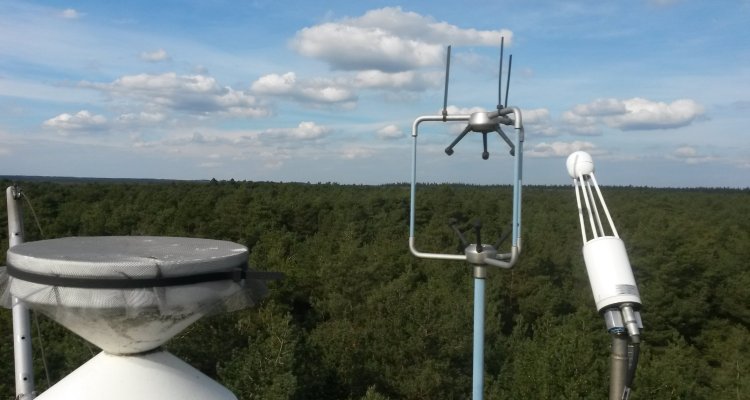
News
Ruisdael Observatorium (Ruisdael Observatory) will model the Dutch atmosphere with a resolution of 100 metres
The Ruisdael Observatory, a national initiative that Wageningen University is taking part in, is a nationwide observatory for measurements of the atmosphere. It was set up to enable more concrete, detailed forecasts of the weather and air quality.
At the moment, it is not yet possible to make reliable, detailed predictions of, for example, local heavy rain showers, or particulate matter concentrations on the ground. After all, they are the result of all sorts of mutually influencing factors, such as solar radiation, the concentration of greenhouse gases, air quality, humidity, buildings or vegetation on site, and wind direction. The underlying and interrelated physical and chemical processes take place on a very small scale, at which measurements are currently lacking. As a result of this, such things as drawing up weather forecasts are very difficult.
The Ruisdael Observatory, named after the 17th century painter Jacob Ruisdael, famous for his cloudy skies, will be modelling the entire Dutch atmosphere with a high resolution of only 100 metres. In doing so, Dutch research is positioning itself on the front line of atmospheric science. In order to be able to combine all these various areas of expertise, the Ruisdael Observatory also constitutes a framework of cooperation among many parties. The consortium consists of researchers from the Royal Netherlands Meteorological Institute, Utrecht University, University of Groningen, Vrije Universiteit Amsterdam, Wageningen University, National Institute for Public Health and the Environment (RIVM), the Netherlands Organisation for Applied Scientific Research, Energy research Centre of the Netherlands (ECN), and Delft University of Technology (coordinator).
Contributing to climate measurments
On 12 April, this new top research facility received one of the ten certificates for the Nationale Roadmap Grootschalige Wetenschappelijke Infrastructuur (National roadmap for large-scale scientific infrastructure). "We are very happy with it", says Wouter Peters, who coordinates the Wageningen part of the research. "There is a 10-year commitment which is important for ensuring the continuity of the measurements and to build capacity for the longer term. We are contributing to both the infrastructure and the measurements and modelling. With this commitment, our contribution to globally relevant climate measurements is firmly secured for the next 10 years.
One of the facilities that Wageningen University is dedicating to Ruisdael is the measuring station Loobos in Kootwijk. For the past 23 years, Wageningen University has been measuring the CO2, water and energy exchanges between the forest and the atmosphere. "Thanks to Ruisdael, we can now also start measuring the exchange of ozone and biogenic trace gases", says researcher Michiel van der Molen. "It is great that this unique site with a historically long measuring series will be preserved and even enhanced with measurements that are needed in this time and age."
- Unfortunately, your cookie settings do not allow videos to be displayed. - check your settings
Wageningen’s research plane, the Sky Arrow PH-WUR, can also be taken out of the hangar again. This research plane will be equipped with additional gear for measuring greenhouse gases and other trace gases. Researcher Ronald Hutjes: "We will use it to perform research over Wageningen, Rotterdam, and the rest of the Netherlands. The new measurement data will undoubtedly help to increase our knowledge of the atmosphere."
- Unfortunately, your cookie settings do not allow videos to be displayed. - check your settings
Researcher Jordi Vila predicts that the small-scale modelling, in which even the turbulent eddies in the air can be calculated, will really be a breakthrough for the weather and climate forecasts within the next 10 years. He does this with DALES, the Dutch model for small-scale modelling of the atmosphere. It integrates meteorology, the atmospheric chemistry around plants, the physiology of the vegetation, and the dynamics of the soil. This way, the measurements of Ruisdael will cover the whole troposphere, from the ground to a height of about twelve kilometres, as that is the layer of the atmosphere that determines our weather, our climate, and our air quality.